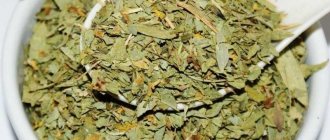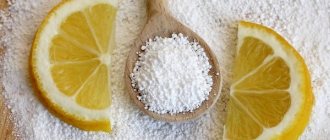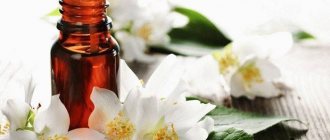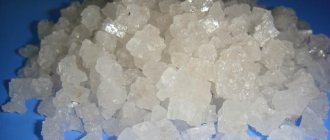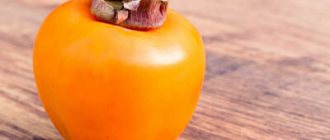Latin name: Equisetum arvense
The dinosaur-surviving horsetail is often called a “living fossil.” The ancestors of this plant were gigantic in size and dominated the earth before the advent of seed, flowering crops. The Romans called it “the hair of the Earth.”
Horsetail is a species of perennial herbaceous plants of the genus Horsetail, family Equisetaceae.
It has many colorful folk names:
- ponytail,
- water pine,
- nursery,
- padihair,
- panicle,
- grass mop,
- pusher, etc.
Horsetail - botanical description
The growth and development of horsetail occurs in two stages: with the onset of spring, erect, brownish shoots first appear, which end in a spore-bearing spikelet. The spores ripen in early summer. Tiny and light, they easily travel long distances with the help of the wind. As soon as their reproductive function is completed, the fruiting stems wither and are replaced by sterile stems, very branched and taller than the spring shoots of horsetail.
The height of the stems reaches 50 cm, they are separated by nodes, reminiscent of a pine branch. A blackish ring around each node breaks up the overall bright green coloration.
Vegetative shoots of horsetail are hollow, smooth, and are distinguished by the presence of nodes on which there are serrated sheaths (reduced leaves). They are formed by reduced leaves fused together, which do not photosynthesize and grow in whorls of 6–12.
The horsetail leaf is modified and is absent as an independent organ.
The branches are hard and rough to the touch. The rough texture is due to the presence of large amounts of silica in the plant.
The horsetail root consists of deep-lying creeping branches with black tubers on them. Tubers serve as a reproductive organ and store a supply of essential nutrients. It is this reserve that allows horsetail to “colonize” new lands, growing aggressively. It is extremely difficult to eradicate it. Therefore, horsetail in the garden is a “headache” for summer residents.
Preparation of horsetail tincture
Horsetail for weight loss is taken in the form of a tincture. Today there are several options for preparing such a tincture. We will look at those that are popular.
- Place 4 tbsp in an enamel container. l. dried herbs, add 1 tbsp. water. It is advisable to add boiled water. Place the container in a water bath, after covering it with a lid. Prepare the decoction for 30 minutes. After the time has passed, turn off the heat and let the broth cool to room temperature (10-15 minutes). Strain the contents of the container and squeeze out the grass. You should get 200 ml of decoction. If necessary, add boiled water. This product is quite concentrated, so it should be taken after meals (preferably after 50-60 minutes) 1/3 cup.
- Bring 200 ml of water to a boil. Pour this boiling water into 3 tbsp. l. horsetail. Leave it for half an hour. Divide the resulting decoction into 3 servings, which we drink throughout the day.
- In addition to horsetail for weight loss, this product contains mantle, linden blossom and strawberry leaves. We take 10 grams of all herbs, and 20 grams of horsetail. Pour the resulting herbal mixture with 200 ml of boiling water and cook over low heat for 2-3 minutes. Before using the decoction, it should steep for 30 minutes. It is recommended to take 100-120 ml of this decoction before bed.
Types of horsetail
Horsetail has more than 20 species:
Riverside horsetail (Equisetum fluviatile)
Perennial, grows along the banks of stagnant bodies of water. The stems are not branched or weakly branched, soft, hollow, ribbed. Leaf whorls are cylindrical. The main axis and lateral branches end in a spikelet. Contains small amounts of nicotine, palustrin and aconitic acid.
Horsetail (Equisetum palustre)
Habitat: swamps, meadows, swampy forests. Angular-furrowed stems reach 40 cm. The branches are unequal, arched inward. Contains palustrin, nicotine, equisetonin, flavonoids, silica (10%).
Horsetail (Equisetum pratense)
Sporiferous and vegetative shoots develop simultaneously. After sporulation, the stem does not die, but turns green and develops lateral branches. The branches are simple, horizontal or drooping, up to 8 cm long. There are no branches in the lower part of the stem.
Horsetail (Equisetum sylvaticum)
The height of the perennial is 25-60 cm. Habitat is clearings, forests, often coniferous. The sheaths are bell-shaped, with reddish teeth. The complex structure of horsetail branches gives the plant an “openwork” appearance.
Wintering horsetail (Equisetum hyemale)
Shallow, coastal, evergreen crop. Forms bunches of hard, thick shoots with a sharp spikelet.
An interesting property of horsetail is the absorption of minerals contained in the soil, including gold, by concentrating them in its tissues.
Chemical composition of horsetail
Horsetail contains some extremely rare minerals and unique organic compounds. Its chemical composition is rich and varied:
- alkaloids (nicotine, palustrine, dimethylsulfone);
- silicic acid (up to 25%);
- flavonoids (luteolin, apigenin, quercetin);
- vitamins, minerals, trace elements;
- essential oils;
- organic acids (malic, oxalic, aconitic);
- saponin (equisetonin);
- resin, bitterness.
Medicinal properties of horsetail
The medicinal properties of horsetail are based on the presence of silica and antioxidant compounds in its composition. They act both alone and together to achieve the greatest effect in treatment.
Horsetail is a well-known diuretic plant that can increase urine secretion by 30%. This makes it ideal for those suffering from arthritis and gout, as well as kidney, bladder and kidney stone problems.
Medicine is known for its anti-inflammatory, cleansing, tonic, astringent, antiseptic, diuretic, anthelmintic, antimicrobial and hemostatic properties.
Rheumatoid arthritis, osteoporosis
Rich in silica and mineral salts, horsetail has a reputation as a bone and connective tissue remineralizer. Silica deficiency precedes calcium loss, which causes our bones to become brittle. Silica is of paramount importance for our connective tissues - cartilage, muscles and skin. The combination of silica, mineral salts and equisetonin provides the antirheumatic effect of horsetail.
Analgesic and anti-inflammatory compounds neutralize the symptoms of arthritis.
Wounds and burns
Horsetail preparations accelerate wound healing and regeneration of damaged tissue. Silica helps seal the wound, and flavonoids prevent infection.
Decreased immunity
The antibacterial and antiseptic properties of horsetail can protect against foreign pathogens and substances that can compromise our immune system.
Cold, cough
If you suffer from respiratory problems and frequent colds, horsetail tea may be a great solution. Acting as an expectorant, it removes mucus and phlegm where bacteria can settle and grow, while also strengthening the immune system and reducing inflammation.
Enuresis, cystitis
Horsetail increases the tone of the bladder walls, making them less permeable to bacteria. It would seem that an herb that increases the need to urinate would aggravate it, when in fact the healing, strengthening and tonic effects of horsetail actually improve the condition. The British Directory of Herbal Medicines of the last century (Potter's Cyclopedia, 1915) recommends horsetail for cystitis, urethritis and prostatitis.
Diabetes
Horsetail has antidiabetic properties. Studies on rats confirmed the hypoglycemic effect of the extract. Weight loss in diabetes has also been observed to stop.
Atherosclerosis
Silicon affects lipid metabolism. Therefore, horsetail prevents the formation of fatty deposits in the arteries. Europeans have been using horsetail for the treatment of atherosclerosis for many years.
Many people use horsetail for weight loss. But there is no clinical data confirming its effectiveness in the fight against excess weight.
Dementia, poor memory, insomnia
The effects of horsetail on the brain are just beginning to be discovered medically. Its complex antioxidant composition may protect the brain and improve cognitive function. In old age, antioxidant defenses weaken, which can cause dementia, Alzheimer's disease and Parkinson's disease. Powerful flavonoid antioxidants in horsetail (isoquercetin) enhance cognitive function and improve memory, increasing sleep duration in people suffering from insomnia. The flavonoid isoquercetin acts as a mild and safe sedative.
Asthma
Histamine narrows the airways in asthma, causing difficulty breathing and mucus buildup. Horsetail extract blocks the action of histamine and relaxes the respiratory tract.
Horsetail is an effective natural diuretic.
In modern medicine, any diuretic is supplemented with potassium to replenish the loss of potassium in the urine. Horsetail, however, has its own built-in way of helping the body maintain potassium levels. In a normal diet, the ratio of potassium to sodium is about 2:1, but in horsetail it is 150:1, meaning that any potassium lost due to its diuretic effect is replaced naturally.
Medicinal properties of the plant
The medicinal properties of horsetail allow it to be used in the treatment of the following diseases:
- Inflammation of the oral cavity: periodontal disease, stomatitis, adenoids.
- Fungal infections.
- Chronic bronchitis and asthma.
- Problems with the musculoskeletal system: arthritis, arthrosis, bone fractures, radiculitis, osteochondrosis.
- Cholecystitis, pancreatitis, duodenal ulcer.
- Pathologies caused by metabolic disorders: diabetes, gout.
- Obesity of varying degrees.
- Internal and external edema: heart defects, heart failure.
- Problems with the urinary system: cystitis, urethritis.
- Atherosclerosis of the heart and blood vessels.
- Bleeding: hemorrhoidal, uterine and nasal.
- Female inflammatory processes.
- Pulmonary tuberculosis.
- Lead poisoning.
- Purulent wounds and ulcers: boils, eczema, lichen, dermatitis, psoriasis.
- Dandruff, baldness.
Wash your hair with a decoction to improve the condition of oily hair. This method is not suitable for dry hair, since the plant has the property of drying out hair. Internal use makes the skin healthier and has a beneficial effect on the condition of the nails.
The plant has many properties. These include:
- antimicrobial;
- wound healing;
- restorative;
- antiseptic;
- anthelmintic;
- hemostatic;
- astringent;
- antispasmodic;
- expectorant.
The shoots can be collected independently in the spring and dried. They should be stored in fabric bags for about 4 years. The plant has been used in medicine for several centuries, but some of its properties have not yet been fully studied.
Pharmaceutical preparations based on horsetail
Horsetail is sold in pharmacies in the form of crushed raw materials or filter bags.
The pharmaceutical industry produces dry and liquid extracts of horsetail herb.
It is present in the drug “Traskova Anti-Asthmatic Medicine”.
Horsetail is one of the active substances of the diuretic "Fitolysin" - a paste for preparing a suspension.
Horsetail grass is a component of various herbal preparations: kidney, heart; balms for joints; phyto shampoos, medicinal sprays to strengthen hair.
For ease of use, horsetail is available in capsules.
Vegetable raw materials Horsetail (Equisetum arvense)
Instructions for medical use of the drug
Description of pharmacological action
Herbal preparations of the plant have a diuretic effect superior to kidney tea. In addition, horsetail has hemostatic and anti-inflammatory properties. 5-glucosidluteolin isolated from the plant exhibits antimicrobial and anti-inflammatory properties. Experiments have established that horsetail can have a detoxifying effect, in particular, it helps remove lead from the body. Silicon compounds, contained in large quantities in the plant, play an important role in metabolic processes and the functional activity of connective tissue, mucous membranes, and blood vessel walls; They are especially important for the development of bone tissue.
Indications for use
Edema syndrome of various origins; cystitis, urethritis.
Release form
medicinal plant raw materials; crushed vegetable raw materials; whole vegetable raw materials; vegetable raw materials - powder;
Pharmacodynamics
Diuretic of plant origin. The complex of biologically active substances of the horsetail herb (including silicic acid, saponins, tannins, organic acids, salts) provides diuretic, anti-inflammatory, hemostatic, antimicrobial, detoxification (removes lead) effects. In urine, silicon salts form colloids that prevent the crystallization of urinary stones. The diuretic effect is manifested from the first day of use and throughout the entire course of treatment, as well as with repeated courses (no addiction to horsetail preparations).
Use during pregnancy
Contraindicated: pregnancy, breastfeeding.
Use for renal impairment
Contraindicated: nephritis, nephrosis, nephrosonephritis.
Contraindications for use
Hypersensitivity, nephritis, nephrosis, nephrosonephritis.
Side effects
Allergic reactions, with prolonged use - irritation of the renal parenchyma.
Directions for use and doses
Decoction of horsetail herb (Decoctum herbae Equiseti arvensis): 20 g (4 tablespoons) of raw materials are placed in an enamel bowl, pour 200 ml of hot boiled water, cover with a lid and heat in hot water (in a water bath) for 30 minutes, cool at room temperature for 10 minutes, filter, squeeze out the remaining raw materials. The volume of the resulting decoction is adjusted to 200 ml with boiled water. The prepared broth is stored in a cool place for 2 days. Take 1/3-1/2 cup 2-3 times a day 1 hour after meals. Liquid extract of horsetail (Extractum Equiseti arvensis fluidum). Prepared by percolation method in 60% alcohol. Take 1/2 teaspoon 3-4 times a day. Briquettes of horsetail grass (Bricetum herbae Equiseti): 1.5 slices of briquette are poured with a glass of cold water, boiled for 30 minutes, cooled, filtered. Take 1 tablespoon 3-4 times a day. Horsetail grass granules. Prepare a decoction of 10 granules (1 tablespoon) per 200 ml of water. Take 1 tablespoon 3-4 times a day.
Special instructions for use
The patient needs to consult a doctor when using horsetail for baths, with extensive skin damage, acute skin diseases of unknown etiology, high fever, infectious diseases, heart failure and arterial hypertension.
Storage conditions
Store at 5-8°C.
Best before date
3 months
ATX classification:
A Digestive tract and metabolism
A10 Drugs for the treatment of diabetes mellitus
A10X Other medicinal products for the treatment of diabetes mellitus
The use of horsetail in folk medicine
The use of horsetail in traditional medicine has a long history. The preparations are decoction, infusion, tincture, tea, ointment, powder and even plant juice.
Horsetail decoction
- 4 tbsp. spoons of dry grass;
- 1.5 liters of cold water.
Pour water over the raw materials and put on fire. Bring to a boil, simmer for 5-7 minutes, remove from heat. Cool, strain.
A decoction of horsetail is used for compresses, baths for sweaty feet, hemorrhoids, for the treatment of wounds, skin problems, and hair washing.
Horsetail infusion
- 2 tbsp. spoons of dry grass;
- 200 ml hot water.
Place in a water bath and heat for 20 minutes. Remove from heat, cool, strain.
The infusion will help with diabetes, atherosclerosis, and is good for the liver. Dosage – half a glass three times a day 15 minutes before meals.
Alcohol tincture of horsetail
Horsetail tincture is prepared from herbs and alcohol.
Pour 100 g of raw material into 500 ml of vodka. Seal tightly and leave in a dark place for 10 days. After this period, pour the tincture into a dark glass container and store in a cool place.
Externally, the tincture can be used to strengthen nails and hair. Orally - for uterine bleeding, to improve heart function, remove toxic substances from the body.
Take 1 teaspoon per 0.3 glass of water 2-3 times a day.
Horsetail tea
Pour 1 teaspoon with 1 glass of boiling water, leave for 15 minutes, strain and drink warm. If desired, this tea can be sweetened with honey or a small amount of sugar.
Tea will provide quick relief for headaches, fatigue, cystitis, and colds.
Horsetail ointment
2 tbsp. Grind tablespoons of dry herbs in a blender until powdered. Mix with Vaseline or some neutral cream.
The ointment is suitable for the treatment of wounds, acne, bruises, abrasions.
Horsetail for weight loss
The plant helps in the fight for a slim figure. Weight is reduced due to the removal of harmful substances from the body. Weight loss occurs due to cleansing. After all, as you know, in order to lose excess weight, you need to bring the body into balance and cleanse it. This dull grass will help us. But do not forget that when treating with decoctions you need to follow a regimen and diet. You don't have to give up everything at once. Just be smart about your food choices. Horsetail will help you reduce your appetite. Here's how to use the herb:
- For 4 tbsp. horsetail add 1 tbsp. l boiled water and leave for 30 minutes. in a water bath. Pour 200 g of the cooled broth. water of moderate temperature. Take 0.5 tbsp after meals.
- Take horsetail, parts of nettle, buckthorn, flax seed in equal parts, add 1 tbsp. l. meadowsweet, add 200 ml to the mixture. boiling water Leave the mixture for 20 minutes. in a water bath. The horsetail needs to sit. Should be taken for 1-2 months, 3 times a day on an empty stomach, 1 tsp.
- Take horsetail along with birch leaves in equal parts. Pour boiling water over it. Let the decoction 20 minutes. stand in a dark place. Take tincture before meals, 0.5 tbsp. in 30 min.
- Birch leaves (100 gr.), strawberry leaf, horsetail, elderberry root, 1 tbsp. l. mix. Add 1 tbsp. boiling water, boil for 2 minutes, leave. Take before bedtime.
Traditional medicine recipes
In traditional medicine recipes, horsetail acts in combination with other herbs.
Inflammatory diseases of the kidneys and urinary tract
- 1 tbsp. a spoonful of horsetail;
- 1 tbsp. spoon of birch leaves;
- 2 cups (400 ml) boiling water.
Mix herbs and pour boiling water. Leave in a sealed container until completely cooled. Strain and drink half a glass 3 times a day before meals.
Gallstones
- 1 teaspoon horsetail;
- 1 teaspoon of wormwood;
- 1 cup boiling water.
Pour boiling water over the herbs, leave in a water bath for 10 minutes, remove from heat, and cool. You need to drink horsetail one glass half an hour before meals in the morning and evening. The course of treatment is 7 days. After a 10-day break, the course can be repeated.
Enuresis
Brew 1 teaspoon of horsetail with boiling water in a small cup (150 ml). Let it brew and drink warm 15 minutes before meals 3 times a day. Course – 7 days.
On a note. It is better to brew horsetail not with boiling water, but with hot water.
Traditional recipes and methods of use
A decoction is popular in recipes for alternative treatments. The product is taken as a diuretic, the solution is used to rinse the throat and mouth for caries, and wash the eyes for conjunctivitis. Concentrated formulations are used as an antiseptic and analgesic for sinusitis, for rinsing the nasal cavity, and also treat bumps for hemorrhoids.
INTERESTING fact: Recipes for the treatment of prostatitis: horseradish, bear bile, red brush, Veselka mushroom and tar
How to prepare horsetail decoction
Pour 1 tbsp. l. herbs into a container and pour 250 ml of hot liquid, boil for a couple of minutes, leave for half an hour, strain. Single dose 1 tbsp. l. four times a day. The product relieves swelling well.
The complex collection will help improve sleep, relieve irritability, and normalize heart rhythm. Pour 2 liters of liquid and add 2 tbsp. l. hawthorn inflorescences, 1 tbsp. l. horsetail and 3 tsp. knotweed. Keep the container on low heat for 15 minutes. The single dose is 50 ml three times a day.
Infusion recipes
The infusion is prepared cold and hot:
- Take 3 tbsp. l. raw materials, pour into a container, pour 500 ml of cold liquid, leave the composition for 24 hours, filter. The infusion is added to bath procedures for skin pathologies, for compresses, and as a rinse.
- For the hot method recipe you will need 1 tbsp. l. raw materials and 250 ml of hot liquid, leave the product for half an hour. Can be used in strained form both internally and externally.
For adenoids
An effective remedy for the treatment of adenoids will require: 10 g of raw materials and 250 ml of hot liquid, soak for 40–60 minutes.
For hypertension
To reduce pressure, prepare the following composition: 2 tbsp. l. horse tail, 1 tbsp. l. hawthorn, 200 ml of hot liquid. Leave for 40–60 minutes, filter, divide into three parts and drink throughout the day.
Against psoriasis
To treat psoriasis and eczema, use the following remedy: pour 50 g of horsetail into a container and pour 5 glasses of hot liquid, simmer for 5 minutes. Leave the composition for 3 hours. Treat diseased areas of the body with the solution. Do the procedures every day for a month.
Collection for vitiligo
To treat vitiligo take:
- 10 g nettles, corn silk, juniper berries, plantain and sage;
- 15 g St. John's wort, tree, horsetail;
- 5 g wormwood.
Pour 3 tbsp into a container. l. collection and pour 500 ml of hot liquid, leave the mixture for an hour. Filter and take ½ glass before meals. This herb is also used in combination with other plants to treat nail fungus.
To remove papillomas
To get rid of papillomas, the following composition of medicinal plants in equal proportions is suitable: dandelion root, lemon balm, horsetail, plantain, nettle. Pour 4 cups of water to 3 tbsp. l. composition and simmer over low heat for 10 minutes.
Healing tea for the treatment of the respiratory system
Mannfried Palou, a German herbalist, advises using the drink for respiratory diseases. Recipe: 2 tsp. per 250 ml of hot liquid.
It is better to use the plant with other herbs. Take:
- 10 g horsetail, linden blossom, plantain, mallow inflorescences;
- 5 g thyme, elderberries and dill seeds.
For the recipe you will need: 2 tsp. collect and leave a glass of hot liquid for a quarter of an hour. Take 2 glasses a day as a preventative against colds and ARVI.
INTERESTING fact: The healing properties of swamp duckweed
Antitumor tincture
Alcohol tincture strengthens the immune system, cleanses the blood, and normalizes metabolism. Included in the treatment of benign tumors of the digestive organs.
Recipe: you will need 20 g of raw materials and 1 liter of white wine to keep for a week. Drink 2 tbsp on an empty stomach. l. with internal bleeding.
Simple ways to treat complex diseases:
Did you know that salt dressings work wonders? This recipe was published in Healthy Lifestyle in 2002. Unfortunately, it is not well forgotten, but deliberately erased from memory and discredited by pharmaceutical companies in pursuit of ... Read more
Honey and flax - strong health! Honey with flax seeds is the best remedy for blood vessels and immunity! Detoxify with flax seeds! Colon detoxification is possible using natural remedies. … Read more
MIRACLE MIXTURE FOR THE BODY I always determined the age plus or minus 1-2 years. Once I was visiting and there was a woman there, everyone thought that she was about 35 years old, but from the conversation we realized that we were mistaken. They asked how many… Read more
8 natural products that destroy parasites in the body Most of the world's population suffers from parasitic diseases. Common natural remedies will help your body fight parasites. Parasitic… Read more
Even 1 date causes an irreversible process in the body! Dates are an amazing fruit, which in many countries is credited with the properties of improving health and prolonging life. They say that in China there are long-livers, the basis... Read more
Ointment
The ointment has disinfectant and wound-healing properties. Grind the herb into powder, add any fat 1 to 4. The ointment is used to lubricate wounds, ulcers, and cracks.
Juice
Fresh juice treats asthma, coughing up blood, cardiovascular failure and skin pathologies.
Rinse fresh herbs, pass through a meat grinder, squeeze out the liquid using gauze, and sterilize over heat for 3 minutes. The single dose is 1 tbsp. l. after meal. This is also a good remedy for uterine bleeding, the norm is 6 tbsp. l. during the day.
Oil
Cut a glass of fresh raw materials and pour in the same amount of vegetable oil, leave the mixture for 14 days, filter. Use as a cosmetic for skin inflammation, acne, and to treat spider veins on the face.
For potency and prostatitis
Prostatitis leads to prostate adenoma. Horsetail and chamomile improve conditions, reduce the intensity of symptoms, eliminate pain when urinating, and improve male potency. The daily norm is 500 ml of prepared infusion.
Steam two handfuls of horsetail, pour it onto a cotton napkin, apply it to the lower abdomen, and cover with a blanket. The procedure is carried out twice a day for 2 hours.
Use for enuresis
To treat enuresis, mix horsetail and St. John's wort. Pour a glass of hot water into 1 tbsp. l. collection Drink 1⁄4 cup of the strained broth four times a day.
For atherosclerosis
A complex collection of horsetail, tree, mistletoe, and garlic treats atherosclerosis. For 20 g you will need 200 ml of hot liquid, leave the product for an hour and take 50 ml four times a day.
Drink for the heart
The following drink improves metabolism, cardiovascular and respiratory system activity. Recipe: you will need 3 tbsp. l. raw materials and 3 glasses of hot liquid, simmer for a quarter of an hour on fire, filter and drink throughout the day.
For colds for children
For children under three years of age, when they have a cold, inhalations are given, and fresh juice is dripped into the child’s nose, 2 drops in both halves.
A milk decoction will help cure an old cough, and also prevent the development of osteoporosis: for 250 ml of milk you need to cook 20 g of raw material over low heat for 20 minutes, drink in the morning and evening. For osteoporosis – 1 liter during the day.
For beautiful and thick hair
To improve hair, prepare a mixture of equal portions of nettle, horsetail, hops and marigold. Pour 100 g of the collection into a container and pour 1 liter of hot liquid. Let cool, then add 1 tsp. castor oil Apply to hair every other day.
For gastrointestinal diseases
Complex mixtures are used to treat the stomach and intestines: take 20 g of horsetail and yarrow, 10 g of wormwood, pour 400 ml of hot water, leave the mixture for 2 hours.
For joint health
For the treatment of joints, arthritis, arthrosis, a bath procedure is very helpful. Prepare an infusion: 100 g of herb will require 1 liter of hot water. Brew and pour into the bath. The procedure lasts 15 minutes; 17 baths are required to relieve symptoms.
INTERESTING fact: The benefits of blueberries for the human body
Compress for the thyroid gland
If you have problems with the thyroid gland, put the horsetail in a cotton bag and dip it in boiling water for a couple of minutes. Then squeeze lightly and apply to the thyroid gland until it cools. Procedures are carried out 2-3 times a day.
Features of the use of horsetail for women, men and children
The beneficial properties of horsetail are used in the treatment of purely male or female diseases. Horsetail is a very valuable plant for women.
- The hemostatic activity of horsetail components is effective for the treatment of heavy and painful periods.
- Silica is needed for the formation of collagen, which forms the basis of the connective tissue of the body and ensures its strength and elasticity. Cosmetologists recommend using horsetail on the face.
- A cup of horsetail tea is a good prevention of osteoporosis, which often affects women during menopause.
Horsetail is useful for men as a possible treatment for benign enlarged prostate gland. It relieves swelling and cleanses the prostate.
Children may take horsetail preparations for bedwetting or diarrhea.
Horsetail for adenoids, judging by the reviews, shows good results. For treatment, you need to instill an aqueous infusion of the herb into the child’s nose - 5 drops in each nostril three times a day. As improvement occurs, the dosage can be reduced to twice, then once a day.
Sebastian Kneipp (German healer, priest, 19th century) recommends that everyone over 40 years old drink a cup of horsetail tea every day. Tea maintains the elasticity of blood vessels and strengthens memory.
Horsetail grass: application
An infusion of horsetail herb can be taken as a drink for kidney diseases, bleeding of internal organs, chronic cystitis, and diseases associated with swelling of the heart. Use the decoction as a rinse for inflamed ulcers in the mouth, comedones on the skin, and wounds that do not heal. You can also make an ointment from horsetail. You need to evaporate the herb until you get an extract over low heat. And then mix with Vaseline.
- To make a hair mask, take 1 tbsp. oatmeal, milk, 2 tbsp. almond oil. Mix everything in the right proportion and apply to your hair like a mask. Keep for 30 minutes. This is quite enough. Wash off the mask with herbal infusion of chamomile or sage (chamomile for light hair, sage for dark hair).
- You can also create another recipe. Pour sunflower oil into a small glass jar. Pour in dry chamomile and add a decoction or infusion of horsetail. Leave for 2 weeks in a dark place. Then use it as a mask too. It is better to wash off with shampoo several times and use 1-2 times a week. Thanks to this product, your hair will shine with shine and health!
- Horsetail decoction can also be used to wipe the face. Just brew 1 tbsp. herbs in a cup of boiling water, let stand, cool. Use the product as a skin toner. You can add 1 drop of lavender and tea tree oil to it. Remember that only they can be applied undiluted to the skin in minimal doses. The rest need to be diluted in base oils (such as apricot, peach, olive, linseed). This will help avoid burns.
Horsetail is not only a healing herb, but also a storehouse of vitamins and useful minerals. In spring, you can even enjoy this gift of nature. Nodules and young shoots are eaten. You can use them to prepare salads, various soups and omelettes. They are used as a filling for pies and pies. Useful flour is made from horsetail and its tubers.
Application in cosmetology
Silicon creates a bond between protein molecules that are responsible for the skin's natural ability to retain water, which is extremely important for cell restoration and renewal. It is a natural anti-inflammatory agent that treats skin diseases such as eczema, psoriasis, and atopic dermatitis.
To restore aging skin
Pour 1 cup of dry horsetail herb into 1 liter of hot water and boil for 20 minutes. Strain, cool and wash with this decoction several times a day. You can freeze the broth and wipe your face with ice cubes.
Nourishing and rejuvenating mask
Add 1 tablespoon of honey and 1 teaspoon of grape or apple cider vinegar to a glass of warm broth. Stir until the honey dissolves. Soak a cloth in the broth, apply it to your face and hold for 15 minutes.
Horsetail for hair
This is a good product recognized by the beauty industry. Scientific studies have proven that hair loss goes hand in hand with low silicon levels. It is thanks to silicon that horsetail stimulates hair growth, increasing its strength and thickness.
It is present in the composition of medicinal hair balm. Used to treat baldness and alopecia.
At home, you can rinse your hair with a strong decoction of horsetail.
How to brew horsetail for weight loss
To prepare a healing drink, it is enough to purchase the herb in dried form at the pharmacy. Various decoctions, infusions and teas for weight loss are created based on horsetail:
- Decoction. Take four tablespoons of horsetail and pour 200 ml of boiled, but not hot, water. The mixture is sent to a water bath for 30 minutes. In this case, it is better to cover it with a lid. After the specified time, remove the broth from the stove and cool. Squeeze the herb through cheesecloth until only liquid remains. You should get 200 ml of finished decoction. If there is not enough volume, add more boiled water. Take half a glass twice daily before meals.
- Tea. Horsetail can be brewed together with birch, which is also used for weight loss. You need to take both components in equal proportions and add hot water. Wait 10 minutes for the tea to prepare. Take the drink in the amount of half a glass 30 minutes before meals.
- Infusion. You need to take one teaspoon of dried horsetail and add a glass of hot boiled water to it. Leave for 2 hours. Take 15 ml of infusion 4 times a day.
- Decoction with other herbs. Horsetail, flaxseeds, nettle, buckthorn bark and meadowsweet are used to prepare this medicinal product. All ingredients are taken in equal quantities and poured with boiling water (one glass is enough). Heat for a quarter of an hour in a water bath. Then remove the pan and let the broth cool. Take one teaspoon orally every day an hour before meals.
Horsetail tea for weight loss
Collection and procurement of raw materials
The beginning of summer is the time to collect grass. Green shoots stretched out and absorbed useful substances. It is imperative to make sure that the grass being harvested is horsetail and not its other species. Horsetail is collected in dry weather. In the morning, when the dew has disappeared, you can cut off the green shoots. The cut should be 5-6 cm above the soil surface.
You need to dry it in the shade or in a well-ventilated area, spreading the grass on a “breathable” surface. It is not recommended to wash the grass before drying.
Drying lasts 7-10 days. Dry, brittle horsetail stems are stored in a paper bag or linen bag.
Preparing the tincture
Both the tincture and the decoction are prepared on the basis of dry crushed herbs. You need to take 2 tbsp. l. raw materials and pour 1 glass of warm water. Place in a water bath for 20 minutes. After this, cool the liquid to room temperature.
The infusion must be strained, squeezed and warm water added so that the total volume is equal to 1 glass. Take 4 times a day, 1 hour after meals, ¼ cup. The duration of the course should not exceed 25 days, otherwise dehydration and kidney problems may occur. With urine, waste and toxins leave the body. In addition, weight loss and swelling decreases.
There are several more recipes for similar infusions:
- Pour 4 tbsp into an enamel pan. l. dry herbs, add 1 glass of boiled water. Cover with a lid and place in a water bath for half an hour. Allow the broth to cool slightly. Strain and squeeze the mixture, add 200 ml of boiling water. Take 2 or 3 times a day, 1/3 or half a glass, 1 hour after meals.
- For 1 cup of boiling water, take 2 tsp. herbs, leave for 30 minutes. Drink the resulting infusion during the day in 3 doses. The drink prepared according to this recipe is less concentrated, so it can be taken for a long time.
- Take 20 g of horsetail and 10 g each of mantle, linden blossom and strawberry leaves. Mix the herbs, add 1 cup of boiled water and cook for about 2 minutes. The drink should sit for at least half an hour. It is recommended to take it before bed, ½ glass.
The drink normalizes metabolism. During use, it is recommended to drink at least 1.5 liters of water per day. The best results come from a combination of proper nutrition and physical activity.
Contraindications
In order not to harm the body, you must follow all safety measures.
- Allergies and individual intolerance are reasons to avoid horsetail.
- Horsetail is not recommended during pregnancy and breastfeeding.
- Diabetes (hypoglycemia) with low sugar levels - horsetail can reduce sugar to a critical level.
- Nephrosis, nephritis. Horsetail is one of the undesirable herbs for these diseases.
Treatment with horsetail should be started after consultation with a doctor.
